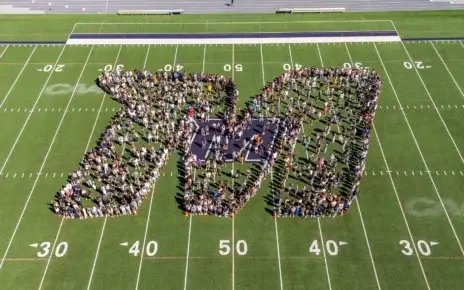Congress Attempts to Make College More Accessible Through Adjusted Loan Program
The Bipartisan Student Loan Certainty Act was signed into law this summer by President Barack Obama, which ties student loan interest rates to treasury notes. This will make the federal subsidized Stafford loan interest rate 3.86 percent instead of 6.85 percent.
According to a fact sheet issued from the White House regarding the bill, provided by Paul Dement, University Director of Community and Government Relations, future loan rates will be calculated “using a formula based on the ten year Treasury Note plus 2.05 percent for undergraduate students, plus 3.6 percent for graduate student and 4.6 percent for PLUS loans.”
The act also sets a cap on the interest rates to ensure that college loan costs do not skyrocket, in the event that the Treasury note rates suddenly rise drastically. Stafford loan interest rates will not exceed 8.25 percent for undergraduates, 9.5 percent for graduate students, and 10.5 percent for PLUS loans, according to the fact sheet.
According to Dement, a typical undergraduate who borrows $6,922 under the compromise plan will save an estimate of $1,545 over the life of their loan this year. However, there are many concerns that the Bipartisan Student Loan Certainty Act was more an act of intolerance than a fiscally sound long-term resolution to curbing student loan debt.
Treasury note rates have always been viewed as an economic indicator for the nation. The higher the rates are, the better the state of the economy. By tying the student loan rates to Treasury note yields, student loan rates will, theoretically, only increase when the United States economy has shown growth from the previous year.
“In my opinion, political and not legal, I think short-term, this had to be done,” Gregory Bordelon, political science professor, said. Bordelon also shares the concern that the Bipartisan Student Loan Certainty Act offers an ironic degree of uncertainty for students who will borrow federal loans in future academic years.
“I think that in the long-term it presupposes a certain rate of economic growth, and anyone in history would tell you that that’s a dangerous presupposition,” Bordelon added.
Bordelon went on to say that mandating that public loan rates to be contingent upon the health of the private sector is a slippery slope, especially since many recent economic indicators have not shown a promising spike in the economy.
Bordelon asked, “The question from a policy standpoint is: do we want higher education funding to be tied at this point to economic projections that may not necessarily look like they are going in a consistent trajectory upward?”
He conluded, “Long-term I think another solution has to be reached.”
Claire Alasio, University Director of Financial Aid, said the bill is advantageous to the thousands of federal student loan recipients at the University. “The news is much better now than it was in March,” Alasio said. “Although students will pay a little higher loan fee, interest rates did not go up as high as expected. And for PLUS loans, loans for graduate students and parents of undergraduates, the interest rates actually went down.”
According to Alasio, approximately 4,400 University students received federal student loans last year and a similar number of recipients can be anticipated this year. “In general, I think [the bill] is a good thing. Interest rates did not double to 6.8 percent,” Alasio said. “The only downside I see to this bill is that the rates are now tied to a 10 year average of Treasury notes, so, in theory, each academic year could potentially have a different interest rate,” she adds.
“Typically, the rates go into effect on July 1, but we usually know in the later part of the spring what those rates will be,” Alasio says. “This makes it difficult for students to anticipate what their interest rates will be in the coming year and if there were a long term spike on T-notes, interest rates could go up.”



